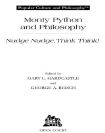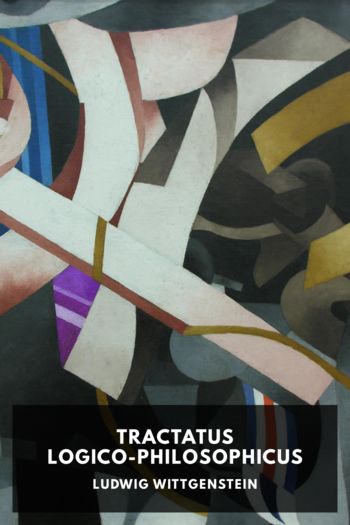Monty Python and Philosophy, Gary Hardcastle [portable ebook reader TXT] 📗

- Author: Gary Hardcastle
Book online «Monty Python and Philosophy, Gary Hardcastle [portable ebook reader TXT] 📗». Author Gary Hardcastle
Tradition and Traits: Virtue Theory and The Holy Grail
If we are seeking a fulfilling and meaningful life, a natural institution to turn to is our cultural tradition. We draw on this tradition for role models to emulate, such as a hero contributing to a noble cause. Indeed, the barber who wanted to be lumberjack might just as easily have broken into song to express a desire to become one of King Arthur’s Knights on a quest for the Holy Grail. What goal could be more worthwhile, what life more worth living?
The appeal of this approach can be understood in terms of an alternative approach to morality known as virtue theory. The heroic individual is the person who possesses the virtues, which are admirable character traits such as courage, temperance, and wisdom. The hero is a moral individual who lives up to and indeed exemplifies the moral standards of her community. In Monty Python and the Holy Grail much of the humor involves the misapplication of heroic virtues.
Sir Robin shows us precisely how to lack a virtue. Despite the fact that he is called “Brave Sir Robin,” when faced with danger he runs away. Sir Robin is not brave, but cowardly. A more subtle failure is represented by Sir Lancelot, who, in contrast to Sir Robin, appears to be brave. He charges into situations without fear, swinging his sword. In one particularly dramatic scene, Sir Lancelot dashes into a wedding party, where he hacks and chops away at the guests and guards before storming the tower stairs. Lancelot’s case, however, reveals another limitation. While his actions (and background theme music) map more clearly onto our sense of the heroic, Lancelot has not displayed bravery either; he is rash. Aristotle (384-322 B.C.E.), perhaps the most influential thinker on the topic of the virtues, argues that most virtues can be placed between two vices in this way; this view is called the doctrine of the mean. Thus, Sir Robin and Sir Lancelot represent the two extremes that allow us to focus on the Aristotelian mean: Sir Robin runs away when it is not appropriate, and Sir Lancelot attacks in an equally inappropriate fashion. The mean that Aristotle describes is not simply a mathematical average. As Aristotle says in Book II, Section 6 of his Nicomachean Ethics (W.D. Ross translation), “both fear and confidence . . . may be felt both too much and too little, and in both cases not well; but to feel them at the right times, with reference to the right objects, towards the right people, with the right motive, and in the right way, is what is both intermediate and best, and this is characteristic of virtue.” Sir Lancelot’s invasion of the wedding party starkly demonstrates the importance of having the relevant feeling at the right time and towards the right people.
Sir Galahad the Chaste provides another interesting illustration of failed virtue. Galahad appears to be pursuing the right goal as he follows the image of the Grail into Castle Anthrax. However, Castle Anthrax turns out to be perfectly designed to challenge Galahad’s virtue, chastity. As Zoot, the mistress of the castle, explains: “We are but eight score young blondes and brunettes, all between sixteen and nineteen-and-a-half, cut off in this castle, with no one to protect us. Oooh. It is a lonely life . . . bathing . . . dressing . . . undressing . . . making exciting underwear. . . .” Galahad is about to yield when Lancelot intervenes and drags him away. Galahad, meanwhile, argues that “it’s my duty as a knight to sample as much peril as I can.” Galahad’s virtue has failed because he has been misled by his desires. Aristotle focuses on the importance of judgment in the application of the mean, and it is precisely this judgment that is distorted in Galahad’s case.
It is important, however, that we not confuse judgment with reason or the attempt to reason; good judgment is something more. Sir Bedevere the Wise can help us to understand this point. In a demonstration of unanchored reasoning gone wild, Sir Bedevere assists a group of villagers trying to determine whether a woman is a witch. He gradually helps them to see that since witches burn because they are made of wood, and wood floats, as do ducks, if the woman weighs the same as a duck, then she must be a witch. Throughout the film we are treated to other instances of Sir Bedevere’s peculiar reasoning. The large wooden rabbit is his idea. After it is successfully wheeled into the French castle, Bedevere sits outside with the other knights and explains how the plan will be completed: “Well, now, Lancelot, Galahad, and I wait until nightfall and then leap out of the rabbit and take the French by surprise, not only by surprise but totally unarmed!” It slowly dawns on him that although the rabbit is in the castle, he and the others are still outside. Bedevere represents an effective illustration of the difference between unanchored reasoning and genuine good judgment. Judgment requires a grasp of the larger context and significance of a choice.
What about King Arthur himself?





Comments (0)